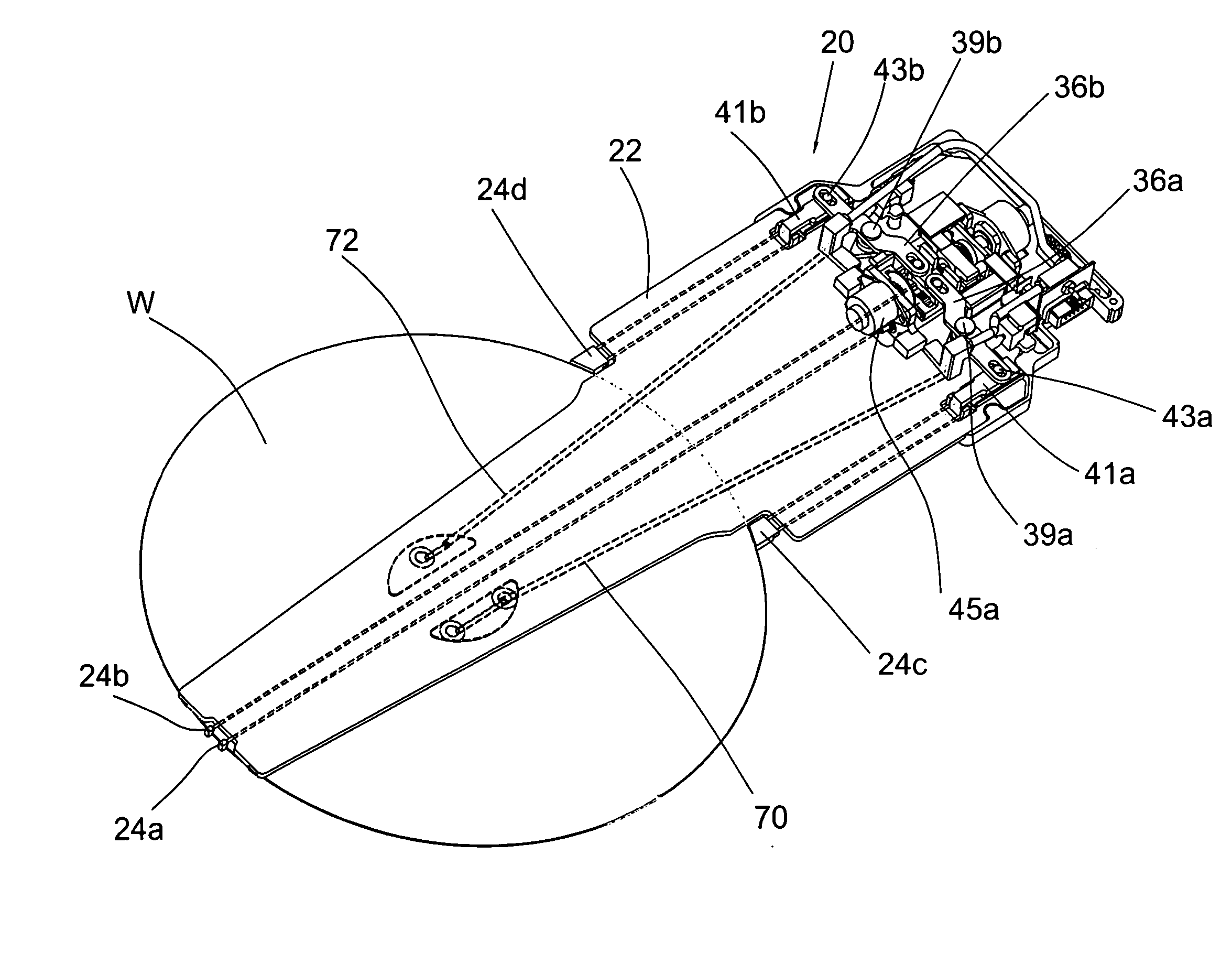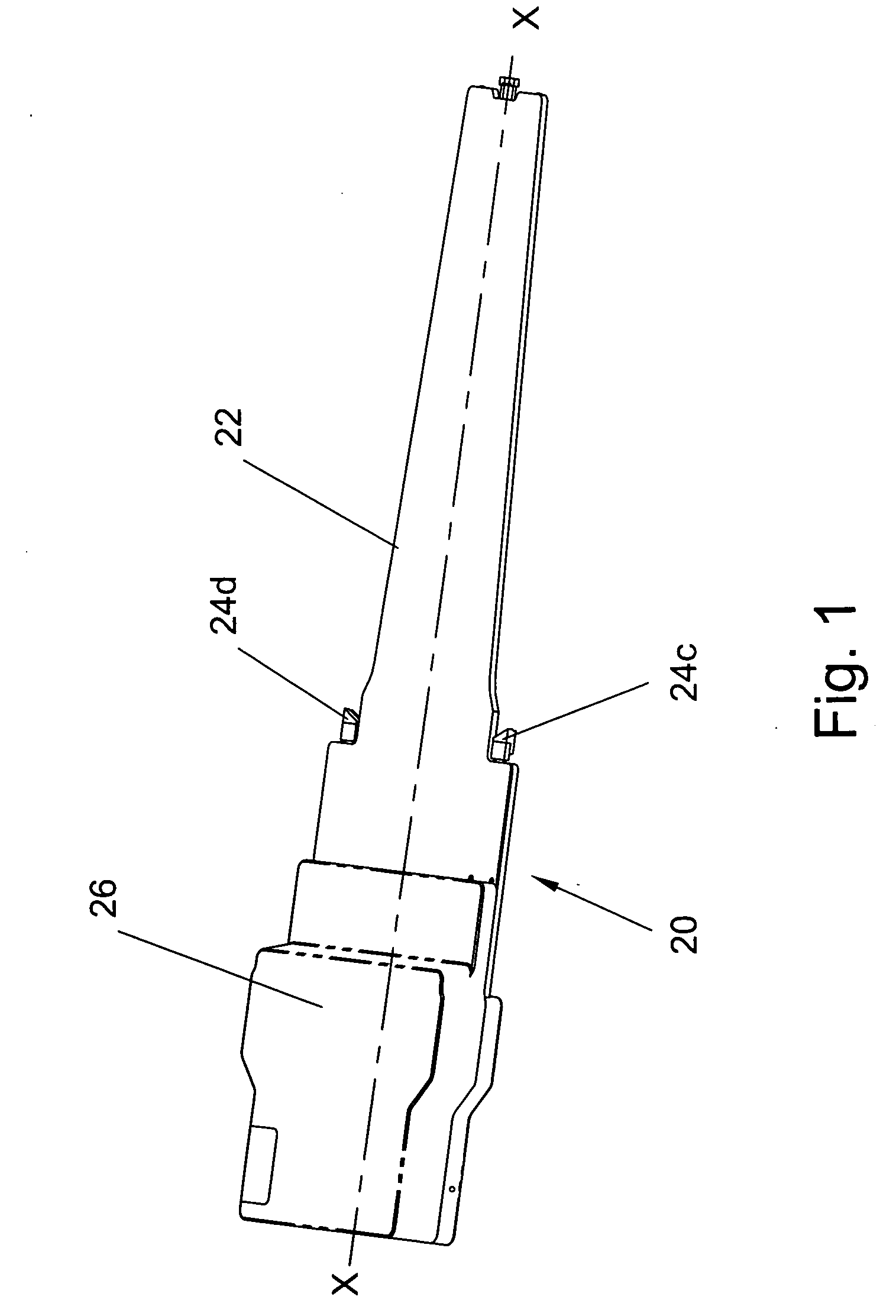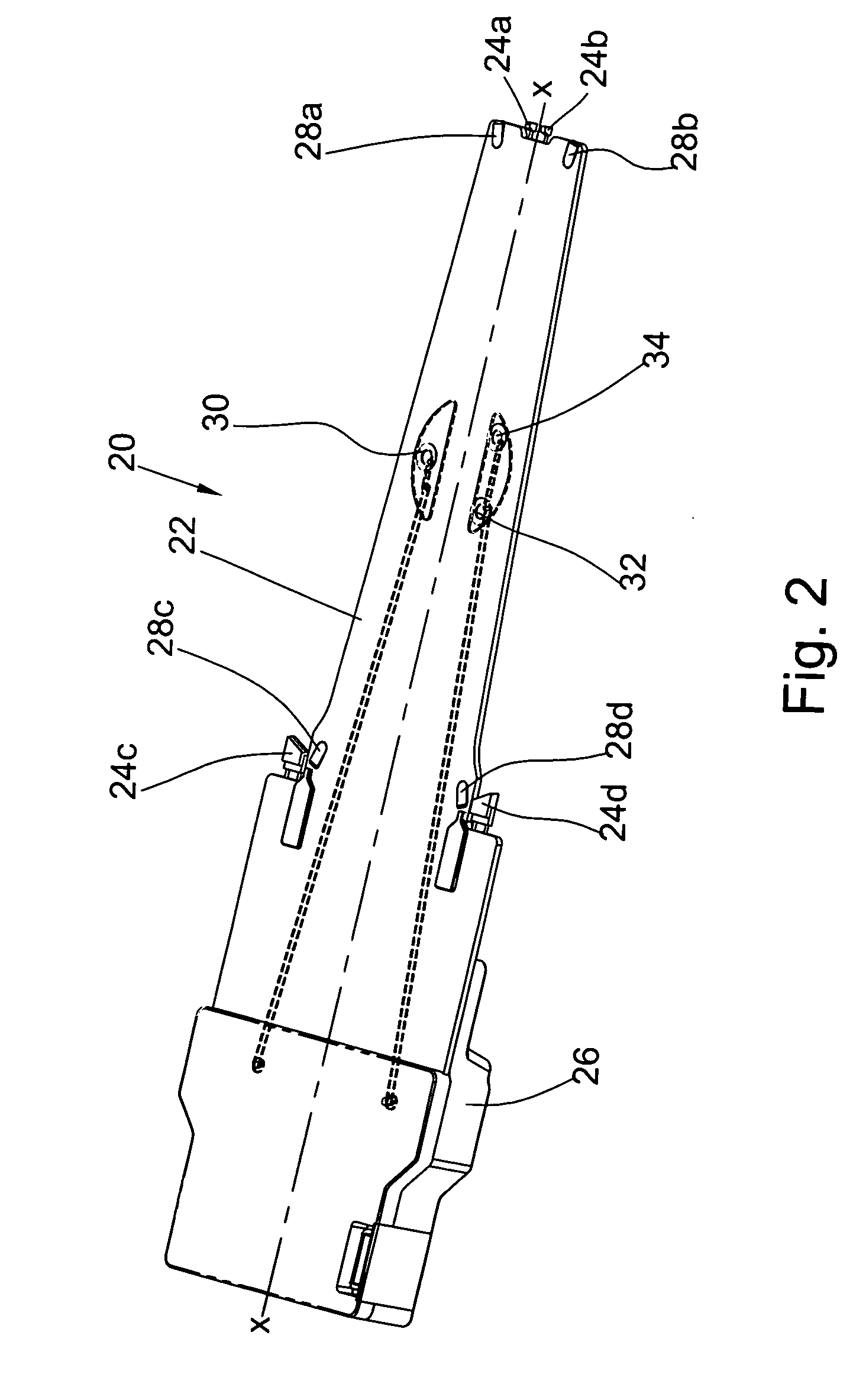Contamination-free edge gripping mechanism and method for loading/unloading and transferring flat objects
a flat object, contamination-free technology, applied in the direction of gripping heads, manipulators, load-engaging elements, etc., can solve the problems of unsolved contamination problems, confusion involved, add unnecessary complexity to equipment design, etc., to improve vibration-damping properties, increase the speed of gripper movement, and reduce the thickness of the transverse cross section
- Summary
- Abstract
- Description
- Claims
- Application Information
AI Technical Summary
Benefits of technology
Problems solved by technology
Method used
Image
Examples
Embodiment Construction
[0041] An example of an edge gripper 20 made in accordance with one embodiment of the invention is shown in FIGS. 1 and 2, wherein FIG. 1 is a three-dimensional top view of the gripper 20, and FIG. 2 is a three-dimensional bottom view of the gripper 20. It can be seen that the gripper body is comprised of a thin flat tapered plate 22 that, similar to a conventional edge gripper, supports gripping fingers located on the backside of the gripper body (FIG. 2), such as a pair of rotating distal fingers, 24a, 24b arranged essentially on the longitudinal axis X-X of the gripper 20, and a pair of proximal side fingers 24c, 24d offset from the axis X-X (FIG. 2). The gripper body 22 is a rigid hollow body made from a strong light-weight material such as amorphous aluminum for low temperature applications (not exceeding 300° C.) or titanium for high-temperature applications (exceeding 300° C.). The thickness of the gripper body 22 does no exceed 3 mm. The use of such relative soft materials i...
PUM
 Login to View More
Login to View More Abstract
Description
Claims
Application Information
 Login to View More
Login to View More - R&D
- Intellectual Property
- Life Sciences
- Materials
- Tech Scout
- Unparalleled Data Quality
- Higher Quality Content
- 60% Fewer Hallucinations
Browse by: Latest US Patents, China's latest patents, Technical Efficacy Thesaurus, Application Domain, Technology Topic, Popular Technical Reports.
© 2025 PatSnap. All rights reserved.Legal|Privacy policy|Modern Slavery Act Transparency Statement|Sitemap|About US| Contact US: help@patsnap.com



